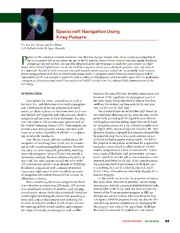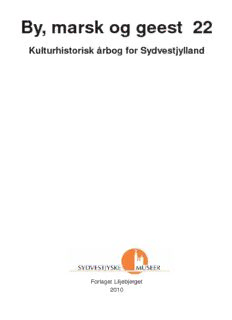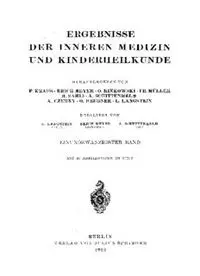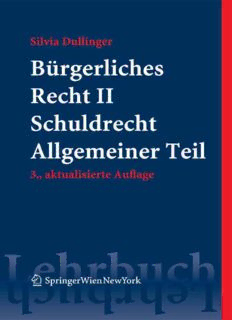
The Agent Modeling Language - AML: A Comprehensive Approach to Modeling Multi-Agent Systems PDF
Preview The Agent Modeling Language - AML: A Comprehensive Approach to Modeling Multi-Agent Systems
Whitestein Series in Software Agent Technologies and Autonomic Computing Series Editors: Marius Walliser Stefan Brantschen Monique Calisti Stefan Schinkinger This series reports new developments in software agent technologies and autonomic computing, with particular emphasis on applications in a variety of scientific and industrial domains. The spectrum of the series includes research monographs, high quality notes resulting from research and industrial projects, outstanding Ph.D. theses, and the proceedings of carefully selected conferences. The series is targeted at promoting advanced research and facilitating know-how transfer to industrial use. About Whitestein Technologies Whitestein Technologies AG was founded in 1999 with the mission to become a leading provider of advanced software agent technologies, products, solutions, and services for various applications and industries. Whitestein Technologies strongly believes that software agent technologies, in combination with other leading-edge technologies like web services and mobile wireless computing, will enable attractive opportunities for the design and the implementation of a new generation of distributed information systems and network infrastructures. www.whitestein.com Radovan Cervenka Ivan Trencansky The Agent Modeling Language - AML A Comprehensive Approach to Modeling Multi-Agent Systems Birkhäuser Basel · Boston · Berlin Authors: Radovan Cervenka Ivan Trencansky Whitestein Technologies Whitestein Technologies Panenska 28 Panenska 28 811 03 Bratislava 811 03 Bratislava Slovakia Slovakia rce@whitestein.com itr@whitestein.com 2000 Mathematical Subject Classification: 68T35 Library of Congress Control Number: 2007923777 Bibliographic information published by Die Deutsche Bibliothek Die Deutsche Bibliothek lists this publication in the Deutsche Nationalbibliografie; detailed bibliographic data is available in the Internet at <http://dnb.ddb.de>. ISBN 978-3-7643-8395-4 Birkhäuser Verlag AG, Basel · Boston · Berlin This work is subject to copyright. All rights are reserved, whether the whole or part of the material is concerned, specifically the rights of translation, reprinting, re-use of illustrations, recitation, broadcasting, reproduction on microfilms or in other ways, and storage in data banks. For any kind of use permission of the copyright owner must be obtained. © 2007 Birkhäuser Verlag AG Basel · Boston · Berlin P.O. Box 133, CH-4010 Basel, Switzerland Part of Springer Science+Business Media Printed on acid-free paper produced from chlorine-free pulp. TCF (cid:102) Printed in Germany ISBN 978-3-7643-8395-4 e-ISBN 978-3-7643-8396-1 9 8 7 6 5 4 3 2 1 www.birkhauser.ch Preface Today, in 2007, the field of study known as multi-agent systems has been in existence for more than 25 years. However, only during the mid-1990s did the field begin to draw widespread attention as the hype-curve approached its zenith. Now as the first decade of the 21st century begins to wane, we find the field ever more active with branches in a myriad of disciplines and aspects of multi-agent sys- tems theory and engineering in use throughout multiple application domains and business sectors. However, one important aspect of multi-agent systems that still lacks complete and proper definition, general acceptance and practical application, is that of modeling, de- spite the substantial efforts of an active research community. In short, software agents are a domain-agnostic means for building distributed applications that can be used to create artificial social sys- tems. Their facility for autonomous action is the primary differentiat- ing property from traditional object-oriented systems and it is this as- pect that most strongly implies that standard UML is insufficient for modeling multi-agent systems. The focus of this book is thus on an approach to resolving this insuf- ficiency by providing a comprehensive modeling language designed as an extension to UML 2.0, focused specifically on the modeling of multi-agent systems and applications. This language is AML—the Agent Modeling Language—the design of which is informed by previ- ous work in this area while explicitly addressing known limitations relating to managing complexity and improving coverage and com- prehension. But why modeling in the first place, and moreover why model multi- agent systems? Software modeling is now a pervasive technique used to simplify the view of a software system by offering abstracted per- spectives and hiding non-essential details. In fact one of the key ben- efits of traditional object-oriented modeling is the availability of easy- to-use semi-formal modeling languages such as UML. As a result, al- most all contemporary software development processes make use of UML modeling for visually documenting aspects of requirements capture, software analysis, design and deployment. And so given that multi-agent systems are essentially a paradigmatic extension of object orientation principles, it is clear that a properly formulated extension vi Preface to UML is feasible for software agent modeling. AML offers such an extension by addressing the particular characteristics associated with multi-agent systems including entities, behavior abstraction and de- composition, social aspects, mental aspects, communicative interac- tions, observations and effecting interactions, mobility, deployment, services and ontologies. But the availability of AML alone is not in itself sufficient to assist adoption; methodological support is also a critical concern. Therefore AML is supported by a software development methodology called ADEM (Agent DEvelopment Methodology) which provides guidelines for the use of AML in general software development processes. ADEM follows the Situational Method Engineering approach to provide flex- ibility in defining concrete methods customized to specific condi- tions of particular system development projects. One other critical as- pect of modeling language utility is tool support, without which widespread adoption is essentially an unobtainable goal. In recogni- tion of this, AML is supported by implementations of its UML profiles for several well-known UML CASE tools including IBM Rational Rose, Enterprise Architect and most recently, StarUML. As AML is still quite new, adoption is still in an early phase but it is hoped that the public availability of the specification, methodology, tools and of course this book will help encourage widespread use. Currently Whitestein Technologies is at the vanguard of adoption having recognized a strong business need for AML and thus sup- ported its creation and evolution. Whitestein, as a leading vendor of multi-agent systems applications, now actively employs AML throughout their product lines spanning telecommunications, logis- tics and business process management. As a final note, the objective of this book is to familiarize the reader with the Agent Modeling Language by explaining its foundation, de- sign principles, specification, and usage. The book however makes no attempt to educate the reader in the techniques of software modeling and thus a reasonable understanding of object-oriented design princi- ples and especially UML is recommended. Acknowledgements Very special thank goes to Dominic Greenwood, not only for the pre- cious discussions and advice which have inspired and shaped many ideas, but also for his generous and unfailing help concerning lan- guage refinements and wording polishing. Without his encourage- ment this book would hardly be published. We are indebted also to the AML technical reviewers, namely Stefan Brantschen, Monique Calisti, and Giovanni Rimassa, for their fruitful comments and suggestions which have substantially influenced the current version of AML. We would also like to thank professor Branislav Rovan for his encour- agement and valuable contribution to the form and content of the work. Thanks to Whitestein Technologies for their support and provision of sufficient time, team of professionals, and other resources which we utilized in our work. We are also obliged to Hilary Greenwood for her thorough proof reading of the final text resulting in substantially improved legibility and understandability. Our thank belongs also to the members of the FIPA Modeling and Methodology technical committees and AgentLink AOSE technical forum groups for the discussions about various topics of agent-ori- ented modeling and agent-oriented software engineering. Last, but not least, to our families for their love, unconditional sup- port, and patience. Contents 1 Introduction . . . . . . . . . . . . . . . . . . . . . . . . . . . . . . . . . . . . . . . . . . . . . . . 1 1.1 Overview . . . . . . . . . . . . . . . . . . . . . . . . . . . . . . . . . . . . . . . . . . . . 1 1.2 Goals of this Work . . . . . . . . . . . . . . . . . . . . . . . . . . . . . . . . . . . . . . 6 1.3 Outline of the Book . . . . . . . . . . . . . . . . . . . . . . . . . . . . . . . . . . . . . 7 Part I: Background Information . . . . . . . . . . . . . . . . . . . . . . . . . . . . . . . . . 9 2 Survey on Agent-Oriented Modeling Languages . . . . . . . . . . . . . . . . . . . . . 11 2.1 Gaia . . . . . . . . . . . . . . . . . . . . . . . . . . . . . . . . . . . . . . . . . . . . . . . . 11 2.2 AUML . . . . . . . . . . . . . . . . . . . . . . . . . . . . . . . . . . . . . . . . . . . . . . . 13 2.3 MESSAGE . . . . . . . . . . . . . . . . . . . . . . . . . . . . . . . . . . . . . . . . . . . . 15 2.4 Tropos . . . . . . . . . . . . . . . . . . . . . . . . . . . . . . . . . . . . . . . . . . . . . . 17 2.5 MAS-ML . . . . . . . . . . . . . . . . . . . . . . . . . . . . . . . . . . . . . . . . . . . . . 19 2.6 AOR . . . . . . . . . . . . . . . . . . . . . . . . . . . . . . . . . . . . . . . . . . . . . . . . 21 2.7 Summary of Today’s MAS Modeling Languages . . . . . . . . . . . . . . . . . 23 3 Requirements on a MAS Modeling Language . . . . . . . . . . . . . . . . . . . . . . . 27 Part II: Solution Summary . . . . . . . . . . . . . . . . . . . . . . . . . . . . . . . . . . . . . . 29 4 The AML Approach . . . . . . . . . . . . . . . . . . . . . . . . . . . . . . . . . . . . . . . . . . 31 4.1 The Purpose of AML . . . . . . . . . . . . . . . . . . . . . . . . . . . . . . . . . . . . 31 4.2 The Scope of AML . . . . . . . . . . . . . . . . . . . . . . . . . . . . . . . . . . . . . . 31 4.3 The Development of AML . . . . . . . . . . . . . . . . . . . . . . . . . . . . . . . . 32 4.4 AML Sources . . . . . . . . . . . . . . . . . . . . . . . . . . . . . . . . . . . . . . . . . . 33 4.5 The Language Architecture . . . . . . . . . . . . . . . . . . . . . . . . . . . . . . . . 35 5 Concepts of AML . . . . . . . . . . . . . . . . . . . . . . . . . . . . . . . . . . . . . . . . . . . . 37 5.1 Multi-Agent System . . . . . . . . . . . . . . . . . . . . . . . . . . . . . . . . . . . . . 37 5.2 MAS Semi-entities and Entities . . . . . . . . . . . . . . . . . . . . . . . . . . . . . 38 5.3 Structural Aspects . . . . . . . . . . . . . . . . . . . . . . . . . . . . . . . . . . . . . . 41 5.4 Social Aspects . . . . . . . . . . . . . . . . . . . . . . . . . . . . . . . . . . . . . . . . . 42 5.5 MAS Deployment and Mobility . . . . . . . . . . . . . . . . . . . . . . . . . . . . 44 5.6 Behaviors . . . . . . . . . . . . . . . . . . . . . . . . . . . . . . . . . . . . . . . . . . . . 46 5.7 Mental Aspects . . . . . . . . . . . . . . . . . . . . . . . . . . . . . . . . . . . . . . . . 48 5.8 Ontologies . . . . . . . . . . . . . . . . . . . . . . . . . . . . . . . . . . . . . . . . . . . 50 6 AML Modeling Mechanisms . . . . . . . . . . . . . . . . . . . . . . . . . . . . . . . . . . . . 53 6.1 Generic Modeling Mechanisms . . . . . . . . . . . . . . . . . . . . . . . . . . . . 54 6.2 Modeling Entity Types . . . . . . . . . . . . . . . . . . . . . . . . . . . . . . . . . . . 57 x 6.3 Modeling Social Aspects . . . . . . . . . . . . . . . . . . . . . . . . . . . . . . . . . . 62 6.4 Modeling MAS Deployment and Mobility . . . . . . . . . . . . . . . . . . . . . 70 6.5 Modeling Capabilities and Behavior Decomposition . . . . . . . . . . . . . 73 6.6 Modeling Interactions . . . . . . . . . . . . . . . . . . . . . . . . . . . . . . . . . . . 76 6.7 Modeling Mental Aspects . . . . . . . . . . . . . . . . . . . . . . . . . . . . . . . . . 87 6.8 Modeling Ontologies . . . . . . . . . . . . . . . . . . . . . . . . . . . . . . . . . . . . 92 6.9 Modeling Contexts . . . . . . . . . . . . . . . . . . . . . . . . . . . . . . . . . . . . . 93 7 Related Work . . . . . . . . . . . . . . . . . . . . . . . . . . . . . . . . . . . . . . . . . . . . . . 95 7.1 CASE Tool Support . . . . . . . . . . . . . . . . . . . . . . . . . . . . . . . . . . . . . 95 7.2 Methodological Support . . . . . . . . . . . . . . . . . . . . . . . . . . . . . . . . . 101 7.3 Practical Application of AML . . . . . . . . . . . . . . . . . . . . . . . . . . . . . . 120 7.4 Standardization Activities . . . . . . . . . . . . . . . . . . . . . . . . . . . . . . . . 121 Part III: AML Specification . . . . . . . . . . . . . . . . . . . . . . . . . . . . . . . . . . . . . . 123 8 Extensions to Standard UML Notation . . . . . . . . . . . . . . . . . . . . . . . . . . . . 125 8.1 Stereotyped Classifier . . . . . . . . . . . . . . . . . . . . . . . . . . . . . . . . . . . 125 8.2 ConnectableElement with a Stereotyped Type . . . . . . . . . . . . . . . . . . 126 8.3 Connector with a Stereotyped Type . . . . . . . . . . . . . . . . . . . . . . . . . 127 8.4 Lifeline with a Stereotyped Type . . . . . . . . . . . . . . . . . . . . . . . . . . . . 127 8.5 Composed Lifelines in Communication Diagrams . . . . . . . . . . . . . . 129 8.6 ObjectNode with a Stereotyped Type . . . . . . . . . . . . . . . . . . . . . . . . 129 8.7 Bi-directional Dependencies . . . . . . . . . . . . . . . . . . . . . . . . . . . . . . 130 8.8 Internal Structure of ConnectableElements . . . . . . . . . . . . . . . . . . . . 131 9 Organization of the AML Specification . . . . . . . . . . . . . . . . . . . . . . . . . . . . 133 9.1 Overall AML Package Structure . . . . . . . . . . . . . . . . . . . . . . . . . . . . . 133 9.2 Specification Structure . . . . . . . . . . . . . . . . . . . . . . . . . . . . . . . . . . . 133 10 Architecture . . . . . . . . . . . . . . . . . . . . . . . . . . . . . . . . . . . . . . . . . . . . . . . 137 10.1 Entities . . . . . . . . . . . . . . . . . . . . . . . . . . . . . . . . . . . . . . . . . . . . . . 137 10.2 Agents . . . . . . . . . . . . . . . . . . . . . . . . . . . . . . . . . . . . . . . . . . . . . . 140 10.3 Resources . . . . . . . . . . . . . . . . . . . . . . . . . . . . . . . . . . . . . . . . . . . . 142 10.4 Environments . . . . . . . . . . . . . . . . . . . . . . . . . . . . . . . . . . . . . . . . . 143 10.5 Social Aspects . . . . . . . . . . . . . . . . . . . . . . . . . . . . . . . . . . . . . . . . . 145 10.6 MAS Deployment . . . . . . . . . . . . . . . . . . . . . . . . . . . . . . . . . . . . . . 166 11 Behaviors . . . . . . . . . . . . . . . . . . . . . . . . . . . . . . . . . . . . . . . . . . . . . . . . . 175 11.1 Basic Behaviors . . . . . . . . . . . . . . . . . . . . . . . . . . . . . . . . . . . . . . . . 175 11.2 Behavior Decomposition . . . . . . . . . . . . . . . . . . . . . . . . . . . . . . . . . 181 11.3 Communicative Interactions . . . . . . . . . . . . . . . . . . . . . . . . . . . . . . 183 11.4 Services . . . . . . . . . . . . . . . . . . . . . . . . . . . . . . . . . . . . . . . . . . . . . . 221 11.5 Observations and Effecting Interactions . . . . . . . . . . . . . . . . . . . . . . 237 11.6 Mobility . . . . . . . . . . . . . . . . . . . . . . . . . . . . . . . . . . . . . . . . . . . . . 249 12 Mental . . . . . . . . . . . . . . . . . . . . . . . . . . . . . . . . . . . . . . . . . . . . . . . . . . . 261 12.1 Mental States . . . . . . . . . . . . . . . . . . . . . . . . . . . . . . . . . . . . . . . . . . 261 12.2 Beliefs . . . . . . . . . . . . . . . . . . . . . . . . . . . . . . . . . . . . . . . . . . . . . . . 274 12.3 Goals . . . . . . . . . . . . . . . . . . . . . . . . . . . . . . . . . . . . . . . . . . . . . . . 277 12.4 Plans . . . . . . . . . . . . . . . . . . . . . . . . . . . . . . . . . . . . . . . . . . . . . . . . 281 12.5 Mental Relationships . . . . . . . . . . . . . . . . . . . . . . . . . . . . . . . . . . . . 289
Description:The list of books you might like

Shatter Me Complete Collection (Shatter Me; Destroy Me; Unravel Me; Fracture Me; Ignite Me)

As Good as Dead

Better Than the Movies

Atomic Habits James Clear

Premier dictionnaire en images

BY FAUZ MOH'D KHAMIS Research paper submitted to the Othman Yeop Abdullah Graduate

DTIC ADA523788: Spacecraft Navigation Using X-ray Pulsars

Capitalism and the Modern World-System: Rethinking the Non-Debates of the 1970s

Report of the Visiting Committee on Management in the Courts

by JEANNETTE VAN DYK submitted in accordance with the requirements for the degree of

2010 Admission

Microtus hyperboreus (Mammalia, Rodentia) in south-eastern Yakutia

By, marsk og geest 22

Ergebnisse der Inneren Medizin und Kinderheilkunde: Einundzwanzigster Band

Die Perser : die Frühzeit des Menschen.

Il cinema americano contemporaneo

Bürgerliches Recht II. Schuldrecht Allgemeiner Teil, 3. Auflage

2016 / 12 / 21 ولغاية 2016 1 1

Einstein Product Metrics in Diverse Dimensions
![Verrassing: verliefd! (Wrangler's Creek 02)[Feelgood 18] book image](https://cdn-3.pdfdrive.to/media/content/thumbnails/17318296.jpg)
Verrassing: verliefd! (Wrangler's Creek 02)[Feelgood 18]




